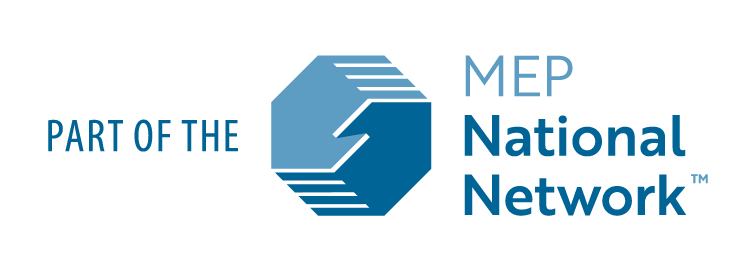Monday, January 22 2024
Building Lasting Resilience in Your Supply Chain
By Tim McDonnell, Supply Chain Services Specialist

As a new calendar year kicks off, the challenges and disruptions experienced in supply chain operations over the past few years will likely continue. Geopolitical conflicts lead the daily and weekly news headlines; inflationary pressures, though subsided much over the past 18 months, have negatively impacted the financial health of many manufacturers; cyber-security threats increasingly continue to persist and impact the flow of goods and services; not to mention evolving customer expectations and distribution changes are increasing stress on supply chains. These are just some of the challenges.
Supply chain capability, agility, and forward-looking visibility are increasingly important to navigate these challenges.
Supply Chain Risk Management and Supply Resilience
The COVID-19 pandemic highlighted the importance of building resilient supply chains to manage supply disruptions. Prior to the pandemic, supply chain management focused on operational performance and partnering with suppliers – managing supply costs, improving supply quality, building supply relationships, and working with a main supplier to improve operationally and grow together. Manufacturers worked to keep their supply base manageable in size and scope. That general strategic direction had a good track record of proven success.
Since the pandemic, it’s become essential for manufacturers of all sizes and industries to reevaluate or redesign their supply chain to improve its resiliency. A company’s supply chain has become essential to its revenue generation and contributes directly to customer satisfaction – more than just cost management.
According to ISM research (Institute of Supply Management), more than two-thirds of CEOs mention that supply resilience is central to their strategic direction and improvement in operational processes, technology investment, and talent management. Their studies indicate companies that have implemented processes, systems, and organizational structures to try and detect and manage supply disruptions have generated shareholder returns more than 50% higher than those companies that have less resilient supply chains.
What Can SMMs (Small and Medium Manufacturers) Do to Develop Resiliency?
So how does a small or medium size company develop or build supply resiliency? Various actions can be implemented to improve supply resiliency and mitigate operational impacts to supply disruptions. Some to consider include:
Supply Redundancy – Identify dual or multiple suppliers and build those relationships for critical material, engineered components, or unique, non-standard supply to help minimize supply disruptions and reduce dependency on one supplier. Business Unit and Engineering leadership can provide input to confirm critical materials and components identified by the purchasing or sourcing team.
Supplier Diversification – As additional supply is added, diversifying that supply geographically helps a business enhance its resilience and addresses other risks such as geopolitical uncertainties, natural disasters, trade disruptions, and other region-specific challenges. If the primary supply is overseas, nearshoring is an effective strategy to diversify supply geographically.
Build Supplier Relationships – Committing to working with suppliers strategically and growing business together will help a company become a priority customer to a supplier even when supply constraints occur. A successful supplier relationship process typically includes regular meetings to review performance, open communication, sharing of business strategies, and collaboration to address operational challenges and find resolutions.
Implement Inventory Strategies – Building inventory or creating inventory buffers to proactively manage supply constraints or disruptions is a straightforward activity but can increase costs. Rather than increase inventory across-the-board, a targeted, analytical approach to increase essential material inventory can be a more effective approach. Conducting an ABC/XYZ analysis will help determine what components are more critical than others and help prioritize where to increase inventory to manage possible shortages.
Vertical Integration – Implement critical, value add manufacturing capabilities that previously had been outsourced. Insourcing critical manufacturing processes enables greater control over the supply chain and manufacturing processes. The benefits of successful insourcing can also include reduced costs, improved product quality, and better, more consistent customer service.
Cross-Train Employees To Handle Multiple Roles Within the Supply Chain and Operations – A recent challenging manufacturing constraint has been a shortage of people (labor). Cross-training employees, where possible, can help manage labor disruptions due to retirements, illnesses, people exits, etc. Cross-training can also provide other workforce benefits such as increasing organizational skill capability, increased flexibility in the workforce, and improved employee engagement.
Any action to improve supply resiliency will require business resources – investment, people resources, sweat and time equity – that compete with other business initiatives. Each of the resilient-improvement activities described share a commonality – they are most successful when they are integrated into a company’s business strategy. The integration into a company business strategy reinforces supply chain as integral to a business and not a transactional activity, aligns other functional teams (e.g. Operations, Engineering, Finance) within an organization to support the initiatives, and helps connect supply chain with customer satisfaction and other business metrics.
What Resources are Available at the Purdue MEP to Manufacturers?
The Purdue Manufacturing Extension Partnership (MEP) provides high-value, affordable solutions to help improve customer satisfaction and businesses increase profitability. As advocates for Indiana's thousands of manufacturers, our staff leverages resources in both the public and private sectors to help identify areas of improvement, streamline processes, and ultimately increase competitiveness. Recently, we expanded our services into supply chain management activities, including supplier scouting through the NIST national network and an updated Supplier Risk Management course offering. Please browse our event calendar at https://mep.purdue.edu/workshops-and-events/ for added supply chain courses this year as well as other manufacturing, leadership, and quality events.
Writer: Tim McDonnell, 317-275-6810, tgmcdonn@purdue.edu


